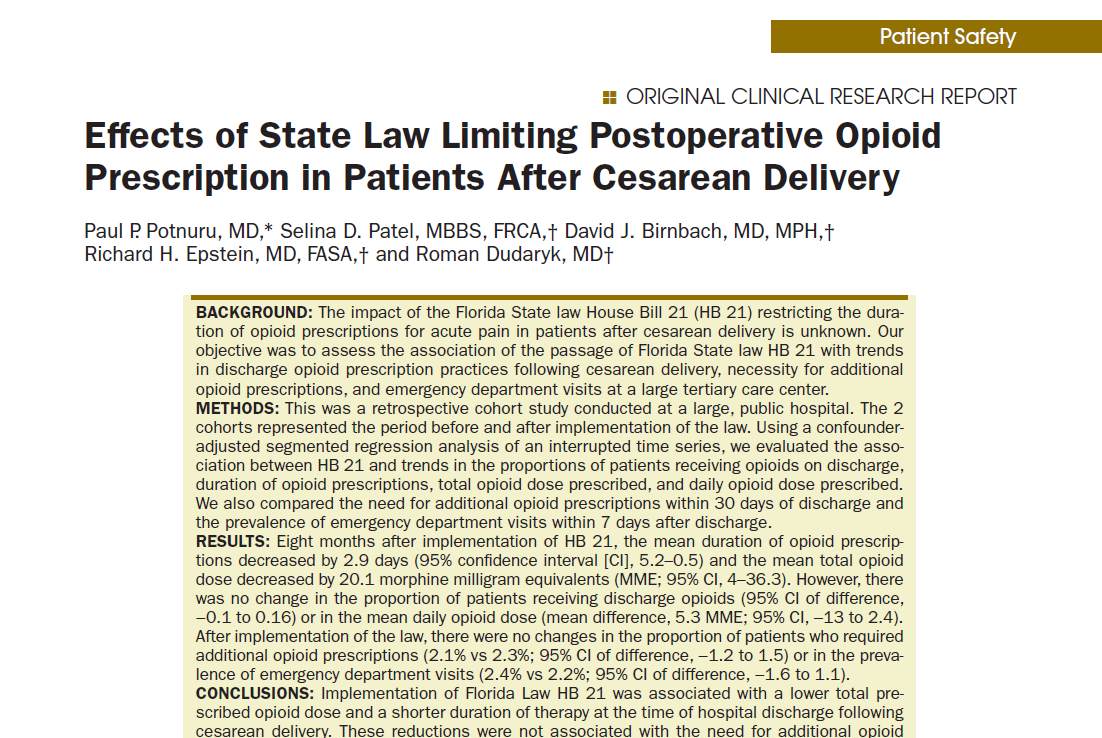Citation: Potnuru PP, Patel SD, Birnbach DJ, Epstein RH, Dudaryk R. Effects of State Law Limiting Postoperative Opioid Prescription in Patients After Cesarean Delivery. Anesth Analg. 2021;132(3):752-760. PubMed ID: 32639388
Study Findings:
Implementation of Florida Law HB 21 was associated with a lower total prescribed opioid dose and a shorter duration of therapy at the time of hospital discharge following cesarean delivery. These reductions were not associated with the need for additional opioid prescriptions or emergency department visits.
A Word on Segmented Regression Analysis
In this paper, we used a particularly useful and informative statistical method called segmented regression analysis of an interrupted time series. The method looks at the pre-intervention trend and level of the outcome and compares it with the post-intervention trend and level. This is particularly important when looking at something like opioid prescriptions as an outcome. Because of the increased focus on opioids, prescribers were already trending towards prescribing fewer opioids (unrelated to the intervention studied [Florida’s HB 21 law]). Therefore, it is important to account for this pre-existing trend to avoid incorrectly “over-associating” the intervention with the change in outcomes.
By using segmented regression analysis, we can reduce the confounding effect of pre-existing trends and perform a more robust analysis of policy-based interventions (e.g., laws, QI initiatives, policy changes within a hospital, etc.).
Resources on Segmented Regression Analysis
- Wagner AK, Soumerai SB, Zhang F, Ross-Degnan D. Segmented regression analysis of interrupted time series studies in medication use research. J Clin Pharm Ther. 2002 Aug;27(4):299-309. PMID: 12174032.
- Mascha EJ, Sessler DI. Segmented Regression and Difference-in-Difference Methods: Assessing the Impact of Systemic Changes in Health Care. Anesth Analg. 2019 Aug;129(2):618-633. PMID: 31008746.
Example of an Article using Segmented Regression Analysis
- Lumbreras-Marquez MI, Reale SC, Carusi DA, Robinson JN, Scharf N, Fields KG, Farber MK. Introduction of a Novel System for Quantitating Blood Loss After Vaginal Delivery: A Retrospective Interrupted Time Series Analysis With Concurrent Control Group. Anesth Analg. 2020 Apr;130(4):857-868. PMID: 31880627.
